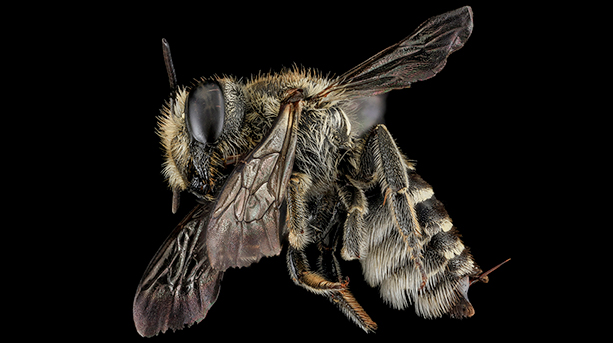Forging a Qubit to Rule Them All
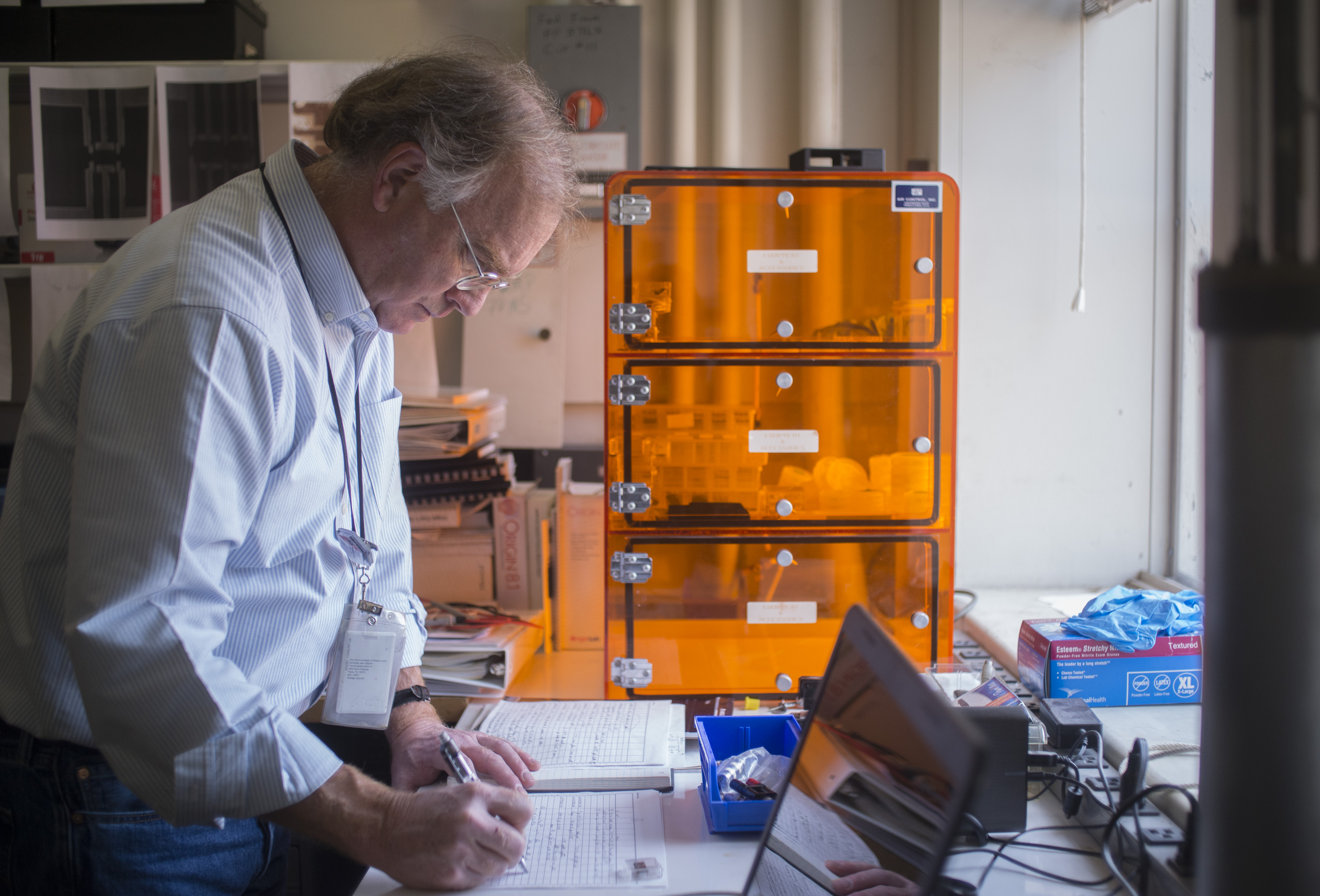
Peering into his cabinet of curiosities on a recent spring day, Bob Willett, a scientist at Bell Labs in Murray Hill, N.J., nimbly plucked a tiny black crystal from the shelves and slid it under a microscope. “This is a good one,” he promised.
A pattern of circuit leads radiated outward on the crystal’s surface like the rays of a square sun. The product of decades of trial and error by Willett and his collaborators, it was made from a flake of gallium arsenide so pure, he said, that electrons inside could sense one another’s presence across vast micrometers of distance. When the crystal is magnetized and cooled to a fraction of a degree, the electrons unite, forming a peculiar quantum state that could be the makings of an unimaginably powerful computer.
Willet is attempting to harness that state to build a “topological qubit” — an information-storing device analogous to the bits that make up ordinary computers, only far more complex and potent. Qubits are the basic building blocks of a quantum computer, an undeveloped technology devised in the early 1980s. Unlike that of ordinary bits, the power of qubits grows exponentially with their number. For many tasks, a comparatively small quantum computer — made up of only 100 qubits — would outperform the world’s best supercomputers and usher in a new level of computing power for humanity.
Scientists have already built qubits, but if Willett’s topological version — which would store information in the braided paths of particles — is realized, it has the potential to be much more stable than existing prototypes. Experts say it could become the most promising foundation on which to build a full-scale quantum computer.
The key to building a quantum computer is increasing the number of qubits that can be linked together. Despite the investment of vast resources over the past 20 years, the extreme fragility of existing qubits has so far restricted efforts to network them and has even fueled uncertainty about whether the technology will ever materialize. Topological qubits, however, would offer a fundamental advantage: Although they would rely on a rare and extraordinarily finicky quantum state (one so difficult to conjure that at present, only Willett can consistently do it), once formed, they theoretically would behave like sturdy knots — resistant to the disturbances that wreck the delicate properties of every other kind of qubit.
“From a theorist’s perspective, topological quantum computing is the most elegant way of achieving robust quantum computation,” said John Preskill, a professor of theoretical physics and director of the Institute for Quantum Information and Matter at the California Institute of Technology. “But the people who were interested in doing topological stuff got kind of frustrated and decided it would be awfully hard — except for Willett.”
A tall, kindly man of 57, Willett works seven days a week, even on holidays, in the bleak labyrinth of Bell Labs, pursuing his goal with an uncommonly single-minded devotion. Over the past few years, he has gathered a growing body of evidence that ultra-pure, ultra-cold, ultra-magnetized gallium arsenide crystals give rise to the strange particles, called “non-abelian anyons,” that are required for a topological qubit. The quality of Willett’s data, and support from theory and numerical calculations, leads many outside experts to believe the effects he is seeing are real. And yet, Willett’s experiment is so difficult that no other labs have managed to replicate it, leaving open the possibility that his striking observations of non-abelian anyons are mere artifacts of his particular setup or technique. Nonetheless, Willett has decided to press on, and recently started construction on what could be the world’s first topological qubit.
“I think there’s a high chance of success,” said Chetan Nayak, who is a theoretical physicist at Microsoft Research Station Q and the University of California, Santa Barbara and collaborates with Willett. “We’ve thought of as many things as we could think of and don’t see anything that’s a deal-breaker.”
Back in his lab, Willett pointed to a close-up photo of an electronic circuit pinned to the wall above his computer. “That’s a qubit,” he said with a smile. The circuit snaked around the surface of the gallium arsenide crystal, encircling two chambers that, if all goes well, will eventually play host to a pair of non-abelian anyons. “It’s got a booger here, here and here,” he said, tapping defects in the pattern. “But we’ve got all the steps in place to make this now.”
The concept of a quantum computer relies on the weird and unique ability of inhabitants of the quantum world — from electrons and photons to non-abelian anyons — to be many things at once. An electron, for example, can spin both clockwise and counterclockwise simultaneously. A photon can be polarized along two axes. The transistors that serve as ordinary bits can only be in one of two states (denoted 0 or 1), but qubits made from spinning electrons or polarized photons are mixtures or “superpositions” of 0 and 1, existing in both states simultaneously. And while the capacity of an ordinary computer grows linearly with the number of bits, when the number of qubits increases, their superpositions become entangled: Each possibility combines with every other to create an exponentially increasing space of possibilities for the state of the quantum computer as a whole. Physicists have discovered quantum algorithms that would operate on this multifaceted network of qubits at record-breaking speed for tasks including database-searching, code-breaking and high-level physics simulations.
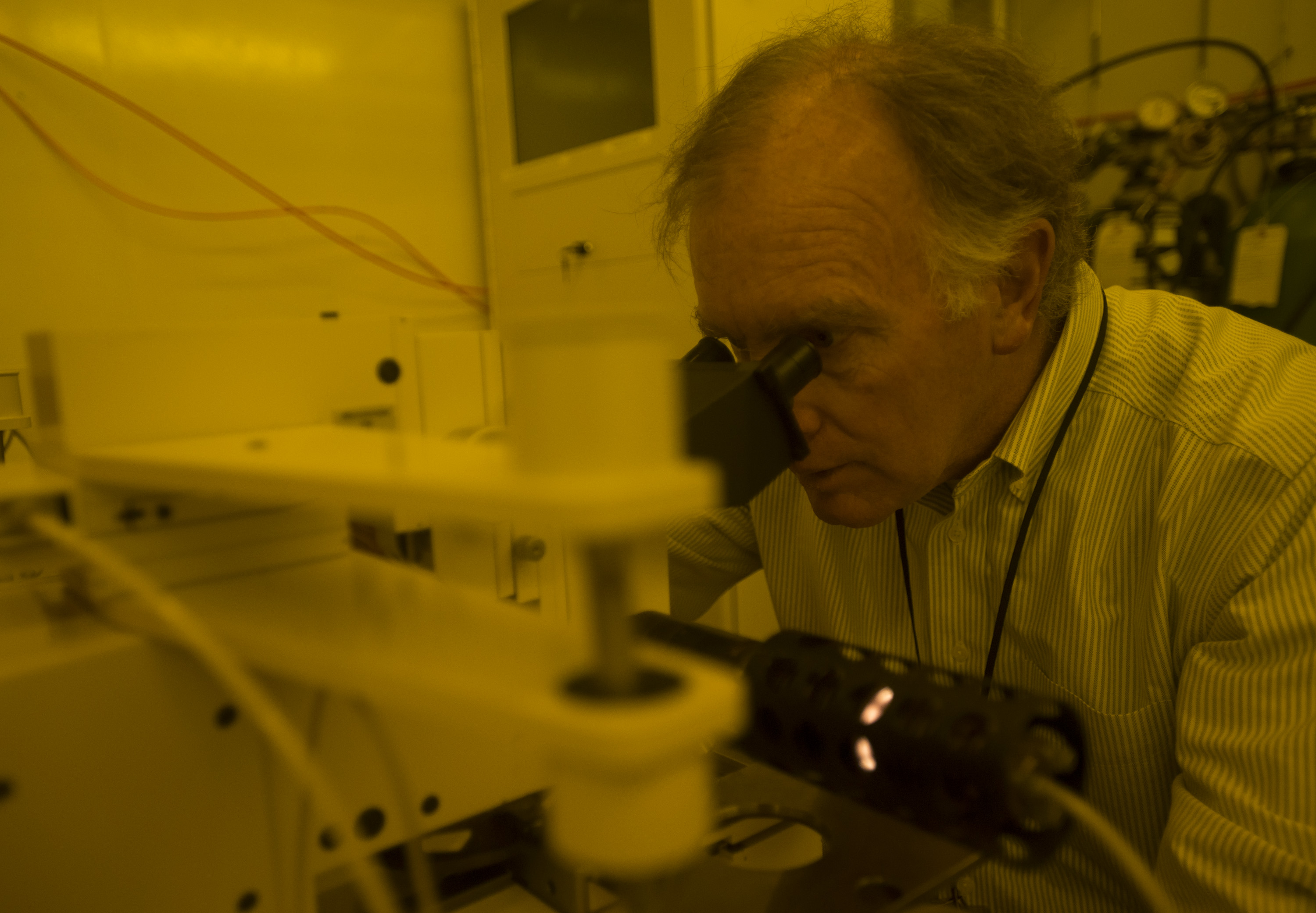
The problem with entangled superpositions of spinning electrons, polarized photons or most other particles that might serve as qubits is that they are terrifically unstable. A light brush with the environment collapses a qubit’s superposition, forcing it into a definite state of 0 or 1. This effect, called “decoherence,” abruptly ends a quantum computation. To fight decoherence, a quantum computer made of entangled electrons, for example, requires each unit of information to be shared among an elaborate network of many qubits cleverly arranged to prevent an environmental disturbance of one from leading to the collapse of them all. “That gives you a big overhead cost,” Preskill said. “If you want a hundred logical qubits” — those involved in a computation — “you’d need tens of thousands of physical qubits in the computer.”
So far, scientists have only managed to build small arrays of physical qubits that stay entangled for less than a millisecond and aren’t capable of doing interesting computations. “I’m not sure if people would claim a logical qubit yet,” said John Martinis, a professor at the University of California, Santa Barbara whose group reported in April the creation of a five-qubit array made from a superconductor. Martinis said some progress has been made in combating the effects of decoherence “but not necessarily in a way where you’d know how to build a logical qubit.”
With the daunting decoherence problem in mind, the Russian physicist Alexei Kitaev (now of the California Institute of Technology) in 1997 conceived of a different approach to quantum computing that sidesteps the issue altogether. Kitaev realized that exceptionally stable qubits could theoretically be formed from pairs of hypothetical particles called non-abelian anyons. That is because the state of a pair of non-abelian anyons is determined not by fragile properties like spin or polarization, but by its topology: how the paths of the two anyons have been braided around each other. If their paths are thought of as shoelaces meandering through space and time, then when the particles rotate around each other, the shoelaces tie in knots. “Non-abelian” means the order of the rotations matters: Swapping anyons A and B and then B and C, for example, produces different braids than swapping B and C then A and B. This distinction enables the particles to serve as qubits because their states will uniquely depend on how they have been braided around each other, encoding the steps of a quantum algorithm. And, crucially, just as touching knotted shoelaces won’t untie them, random environmental perturbations won’t unravel the braids of topological qubits. If non-abelian anyons exist and can be braided, they can theoretically form the building blocks of a robust, scalable quantum computer.
“The coherence times really could be extremely long — weeks as opposed to microseconds,” Nayak said.
Kitaev’s topological quantum computing scheme caused great excitement because a particle that was strongly suspected to be a non-abelian anyon already existed: It was an elusive entity that had been discovered a decade earlier by a graduate student at the Massachusetts Institute of Technology doing his first set of experiments — Bob Willett. “It takes a lot of luck to see something like that right when you’re starting out,” Willett said.
Willett’s mentor, Horst Störmer, a condensed matter physicist at Bell Labs who frequently visited MIT, had in 1982 co-discovered a new class of states of matter, like liquids or solids, only much stranger. (For this, he would share the 1998 Nobel Prize in Physics with Daniel Tsui and Robert Laughlin.) Störmer and his collaborators found that when the temperature and magnetization of a two-dimensional sheet of crystal were just right and the crystal was so pure that the electrons everywhere inside could sense one another, the electrons would shed their individual identities and form a coherent swarm. And in this swarm, new particlelike entities would emerge. Instead of electrons, they were surpluses of magnetic field, each with an electric charge equal to some fraction of the electron’s — a third, for example. Theorists thought they understood why these fractional charges appeared. But in 1986, Willett stumbled across an example, called the 5/2 (“five-halves”) state, that didn’t fit into the theoretical understanding of which fractions were allowed.
Theorists realized in the 1990s that the particles in the 5/2 state were anyons, and probably non-abelian anyons, raising hopes that they could be used for topological quantum computing. In 2005, Nayak, Microsoft Research Station Q director Michael Freedman and Sankar Das Sarma of the University of Maryland designed a topological qubit based on the 5/2 state. Important simplifications soon followed. Many experimentalists — including Willett, who had continued studying fractional quantum states at Bell Labs during the intervening decades — set to work.
The first task was to subject the anyons in the 5/2 state to an “interference experiment” to determine whether they were truly non-abelian. Willett and his colleagues deposited a circuit onto the surface of a gallium arsenide crystal, cooled and magnetized it to induce the 5/2 state, and then measured the peaks and troughs in the current flowing through the circuit. When anyons traverse the circuit, they split into superpositions at every fork in the path and later meet back up. If the two superpositions are identical, they will interfere like overlapping waves, creating peaks and troughs in the current. If they are different, they pass like ships in the night, and the current stays constant. The presence or absence of an interference pattern therefore depends on their states, which for non-abelian anyons are controlled by how they have been braided around other non-abelian anyons. If Willett could kill the interference pattern by trapping an odd number of anyons in the chamber inside the circuit — which would cause the superpositions to braid around them in different directions and attain different states — then the anyons must be non-abelian.
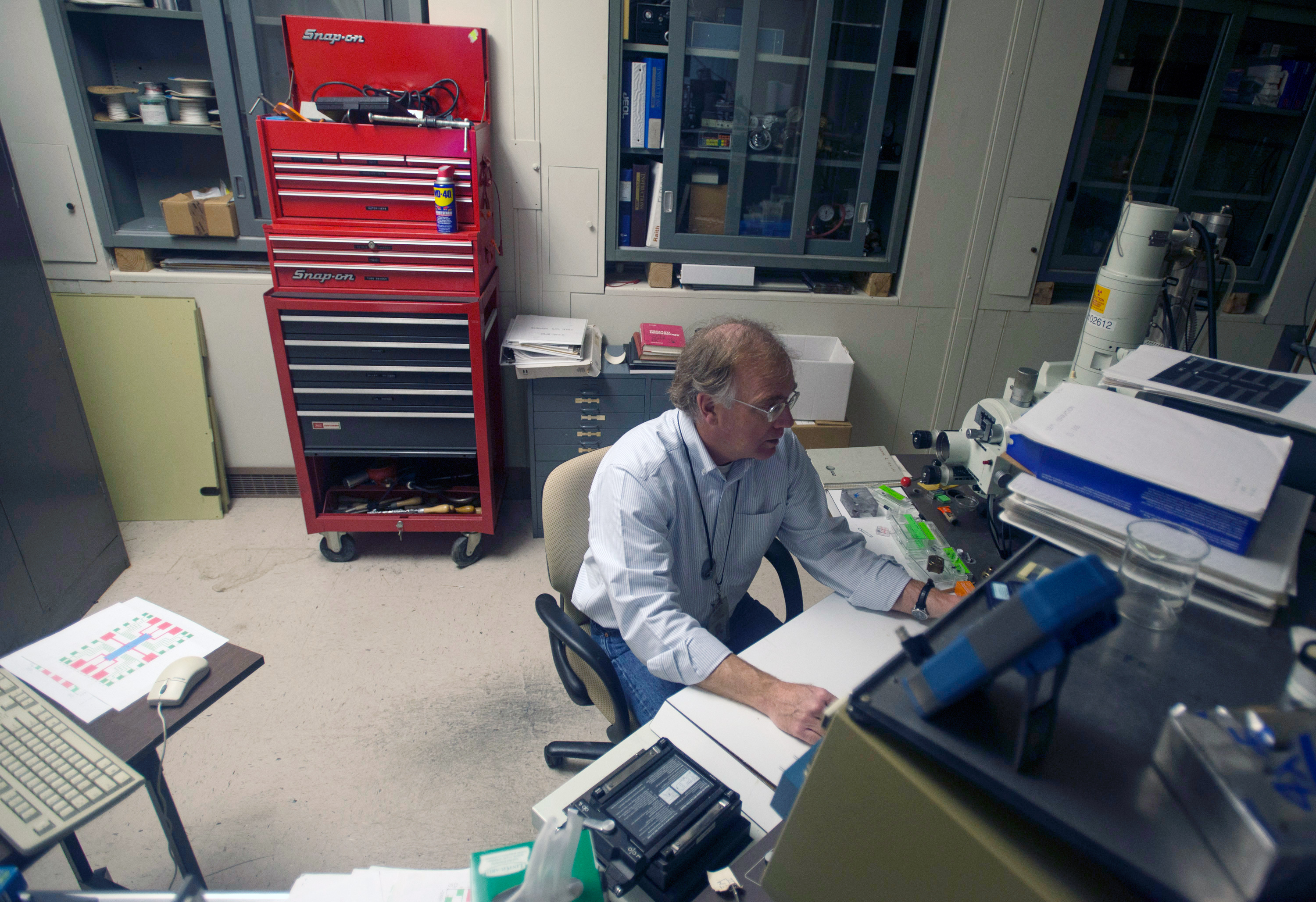
The effect is subtle and at first barely stood out against another interference signal from regular “abelian” anyons, which also arise in the 5/2 state. But over the years, as Willett improved his circuit design to incite more of the alleged non-abelian anyons to form and his collaborators increased the purity of the gallium arsenide crystals, the controllable interference signal grew clearer. His group’s most recent results appeared in October 2013 in Physical Review Letters.
“If you look at the experiments in total, they strongly suggest that the 5/2 state supports non-abelian excitations,” said Mike Manfra, a professor of physics and a gallium arsenide experimentalist at Purdue University who has provided samples to Willett. “It is also true that these results need to be reproduced in an independent lab in order to be conclusive.”
Other researchers, including Charles Marcus, now at the Niels Bohr Institute in Copenhagen, Denmark, have tried and failed to replicate Willett’s data. “We don’t see the wiggles that he sees,” Marcus said. “We don’t know yet whether the data that Bob is reporting is what eventually everybody’s going to see or whether we’re going to say, ‘Nope, that was a red herring.’ ”
But Willett and his colleagues suspect that Marcus’ techniques are at fault. The world’s best grower of gallium arsenide, Loren Pfeiffer, a longtime Bell Labs physicist who moved to Princeton University in 2009 and continues to collaborate with Willett, says he wouldn’t expect Marcus’ group to detect non-abelian anyons. Both groups use Pfeiffer’s gallium arsenide crystals but apply different circuit-fabrication techniques. Pfeiffer, who described the orderly rows of atoms in his crystals as “a beautifully-tended garden,” believes Marcus’ etching procedure is too rough.
When pressed, Marcus said he suspects that the findings of Willett and his collaborators will ultimately be vindicated. “Do I think there are non-abelian anyons in the five-halves state? Yes I do,” he said. Anyway, he added, the matter will be settled once and for all “if the qubit works.”
Building a topological qubit is only slightly more complicated than the interference experiment that Willett and his colleagues have already done. “Basically just double the interferometer to make two chambers instead of one,” he explained. The extra step is an “air bridge” for connecting the chambers, which enables a pair of anyons to be divided between them. These anyons exist in a superposition, and their states can be changed by a current of anyons braiding around them through the circuit. “That’s it,” Willett said. “That forms the element of a topological qubit.”
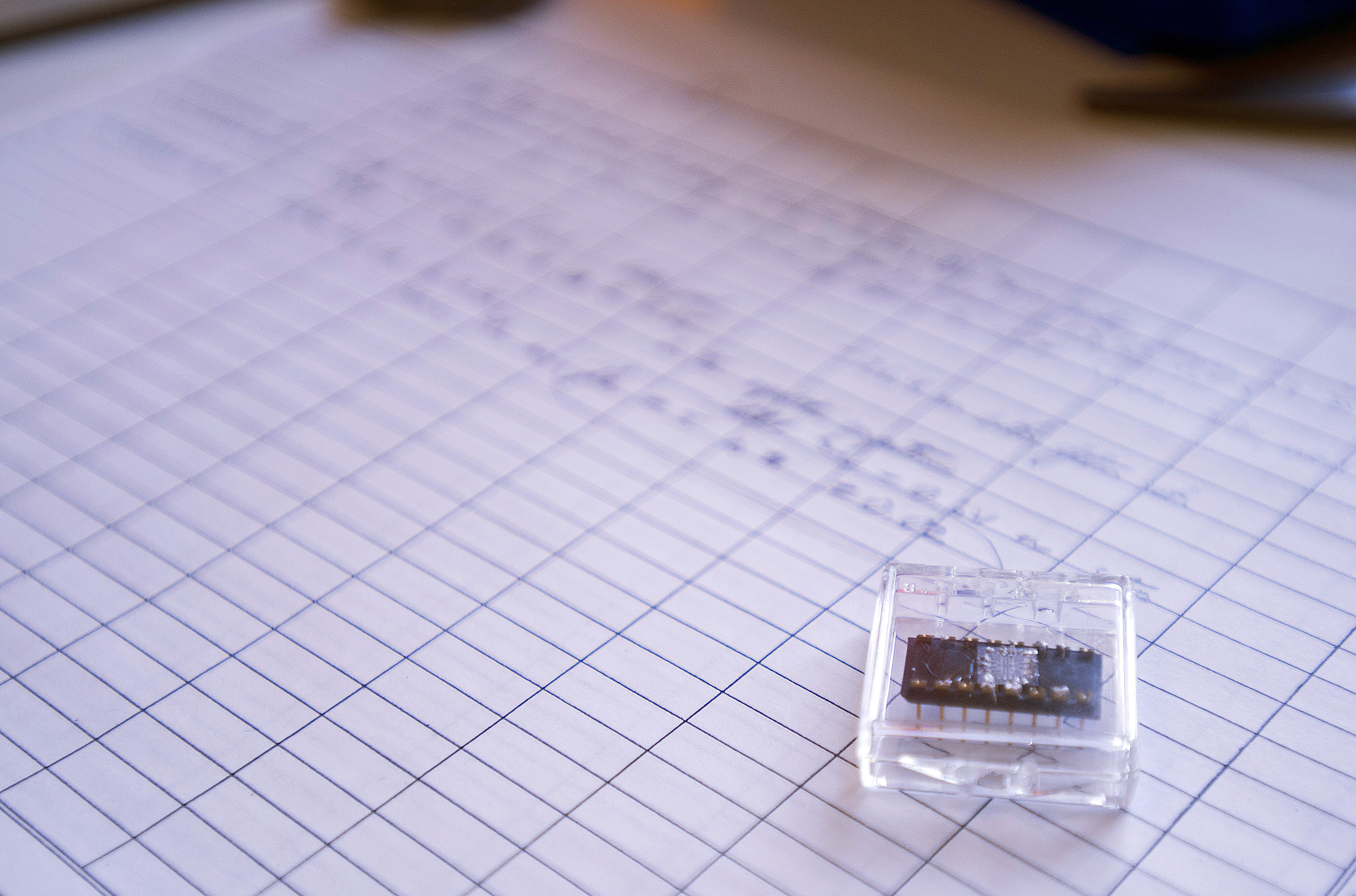
Willett has worked in the same spate of labs along Bell Labs’ seemingly endless main corridor for 25 years. Six years ago, the lab’s parent company, Alcatel-Lucent, started to downsize its basic research program. Pfeiffer moved to Princeton, taking his perfectly calibrated “molecular beam epitaxy” machine with him. Most others left too, but Willett remained. He likes to recall the AT&T heydays, when now-famous names in condensed matter physics filled the long tables in the spacious cafeteria. The epicenter of numerous earth-shattering breakthroughs in fundamental physics over the past century, Bell Labs is also the birthplace of the transistor, the laser, charge-coupled devices, the UNIX operating system, the C and C++ programming languages and information theory itself. Seven Nobel Prizes have been awarded for research in the building. Today, Willett has his labs almost to himself, the happy king of a largely unpopulated realm. Day by day, as he traipses back and forth between his cabinet of crystals, the 25-year-old machines he uses to deposit the circuitry on Pfeiffer’s gallium arsenide wafers and the steaming vats of liquid helium that cool those wafers down, he moves closer to adding a brilliant new entry to Bell Labs’ encyclopedic history of breakthroughs.
“We’ll be able to realize a qubit,” he said. “The underlying physics is there. Now it’s going to be some technical work, but I think that part is even falling into place.”
Of course, unforeseen hurdles may arise. Or, in the long run, other approaches to quantum computing might become so good at staving off decoherence that the topological approach loses its advantage. Nonetheless, if Willett’s experiment succeeds, then Alcatel-Lucent, as well as other labs and funding agencies, will likely scale up their study of the 5/2 state and possibly boost the production of topological qubits. “Immediately, I expect a hundred people to jump on it and start working on it,” Das Sarma said.
Willett, for one, would set a new goal of expanding his circuit design to make a multi-qubit array. He hopes to ultimately build a working topological quantum computer. When asked whether his motivation comes from all the possible uses of such a technology, he couldn’t say. But it didn’t really seem to be that. Willett appeared to be driven along his path by the momentum of all that had come before, rather than what lay ahead. “There’s about 40 years of effort behind making these wafers,” he remarked. “All here in this building.”
This article was reprinted on Wired.com.



